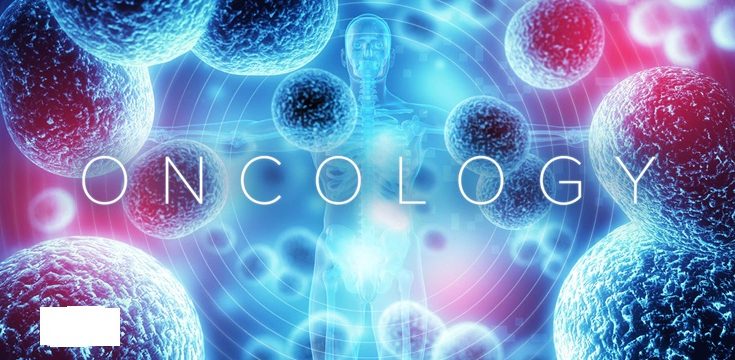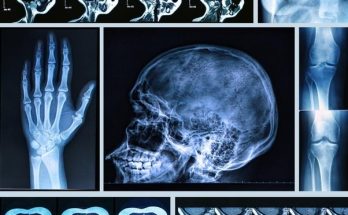Types of Cancer: Classification, Characteristics, and Epidemiology
1. Introduction
Cancer is a group of diseases characterized by uncontrolled cell division and the ability to invade other tissues. It is classified based on the tissue of origin, cell type, and genetic/molecular features. Understanding cancer classification is essential for diagnosis, treatment planning, and research into targeted therapies.
2. Classification of Cancer
Cancers are classified into five major groups based on their origin:
2.1 Carcinomas (Epithelial Cancers)
- Origin: Epithelial cells lining organs and glands (e.g., skin, lungs, breast, colon).
- Characteristics: Rapid growth, potential to spread through lymphatics.
- Examples:
- Adenocarcinoma (glandular cells) → Lung, breast, prostate, colon.
- Squamous Cell Carcinoma (flat epithelial cells) → Skin, esophagus, cervix.
- Basal Cell Carcinoma → Skin cancer, rarely metastasizes.
- Epidemiology:
- Lung cancer (adenocarcinoma, squamous cell) is the leading cause of cancer deaths worldwide.
- Breast cancer is the most common cancer in women globally.
Image: Carcinoma Development
(A comparison of normal epithelial cells vs. carcinoma invading tissue.)
2.2 Sarcomas (Connective Tissue Cancers)
- Origin: Bones, muscles, fat, cartilage, and blood vessels.
- Characteristics: Rare but aggressive; spread through the bloodstream.
- Examples:
- Osteosarcoma (bone) – Common in children.
- Liposarcoma (fat tissue).
- Leiomyosarcoma (smooth muscle).
- Epidemiology:
- Sarcomas account for <1% of all cancers but are more common in children and young adults.
Image: Sarcoma Types and Affected Tissues
(A diagram showing different sarcomas in the body.)
2.3 Leukemias (Blood Cancers)
- Origin: Bone marrow, affecting blood-forming cells.
- Characteristics: Uncontrolled growth of white blood cells (WBCs), leading to reduced red blood cells (RBCs) and platelets.
- Types:
- Acute Leukemia – Rapid progression; common in children.
- Chronic Leukemia – Slow progression; more common in adults.
- Lymphoid Leukemia – Affects lymphocytes (e.g., Acute Lymphoblastic Leukemia [ALL]).
- Myeloid Leukemia – Affects myeloid cells (e.g., Acute Myeloid Leukemia [AML]).
- Epidemiology:
- Most common cancer in children (especially ALL).
- More frequent in older adults (Chronic Myeloid Leukemia [CML]).
Image: How Leukemia Affects Blood Cells
(A diagram comparing normal blood to leukemia-affected blood.)
2.4 Lymphomas (Lymphatic System Cancers)
- Origin: Lymphatic system (lymph nodes, spleen, immune cells).
- Characteristics: Painless swelling of lymph nodes, immune dysfunction.
- Types:
- Hodgkin’s Lymphoma (HL): Presence of Reed-Sternberg cells.
- Non-Hodgkin’s Lymphoma (NHL): More aggressive, involves B or T lymphocytes.
- Epidemiology:
- NHL is more common than HL, with increasing cases in older adults.
- Linked to infections (e.g., Epstein-Barr virus, HIV).
Image: Lymphoma Development in the Lymph Nodes
(A visual representation of affected lymph nodes.)
2.5 Central Nervous System (CNS) Tumors
- Origin: Brain and spinal cord.
- Characteristics: Can be benign or malignant; high impact on function due to location.
- Types:
- Gliomas (astrocytomas, oligodendrogliomas) – Arise from glial cells.
- Meningiomas – Arise from meninges, usually benign.
- Medulloblastomas – Common in children, aggressive.
- Epidemiology:
- Brain tumors are the most common solid tumors in children.
- Glioblastoma multiforme (GBM) is the most aggressive adult brain cancer.
Image: Brain Tumor Locations and Effects
(A labeled diagram of common brain tumor sites.)
3. Characteristics of Cancer Types
While each cancer type has distinct biological and clinical features, they share common characteristics:
3.1 Uncontrolled Growth
- Loss of cell cycle regulation (mutations in p53, Rb genes).
- Evasion of apoptosis (programmed cell death).
3.2 Invasion and Metastasis
- Cancer cells break through basement membranes, enter blood/lymphatic vessels, and spread to distant organs.
- Common metastatic sites:
- Lung cancer → Brain, bones, liver.
- Breast cancer → Bones, liver, lungs.
- Prostate cancer → Bones.
3.3 Angiogenesis (Blood Vessel Formation)
- Tumors release vascular endothelial growth factor (VEGF) to form new blood vessels for nutrients and oxygen.
Image: Tumor Angiogenesis Process
(A diagram showing new blood vessel formation in a tumor.)
4. Epidemiology of Major Cancer Types
4.1 Global Cancer Incidence and Mortality
- Most common cancers worldwide (2023):
Breast Cancer
Lung Cancer
Colorectal Cancer
Prostate Cancer
Stomach Cancer - Leading causes of cancer deaths:
Lung Cancer
Colorectal Cancer
Liver Cancer
Stomach Cancer
Breast Cancer
4.2 Regional Cancer Variations
- Africa: High rates of cervical and liver cancer (due to HPV, hepatitis).
- Asia: Stomach and liver cancers are prevalent (linked to diet and infections).
- Europe/North America: Higher rates of breast, lung, and prostate cancers (linked to lifestyle and aging).
Image: Global Cancer Incidence by Region
(A world map showing common cancers in different regions.)
5. Conclusion
Cancer classification helps in diagnosis, treatment selection, and prognosis determination. With advances in genomics and targeted therapies, personalized cancer treatment is becoming more effective. Early detection, prevention strategies, and public awareness remain crucial in reducing cancer mortality rates.



